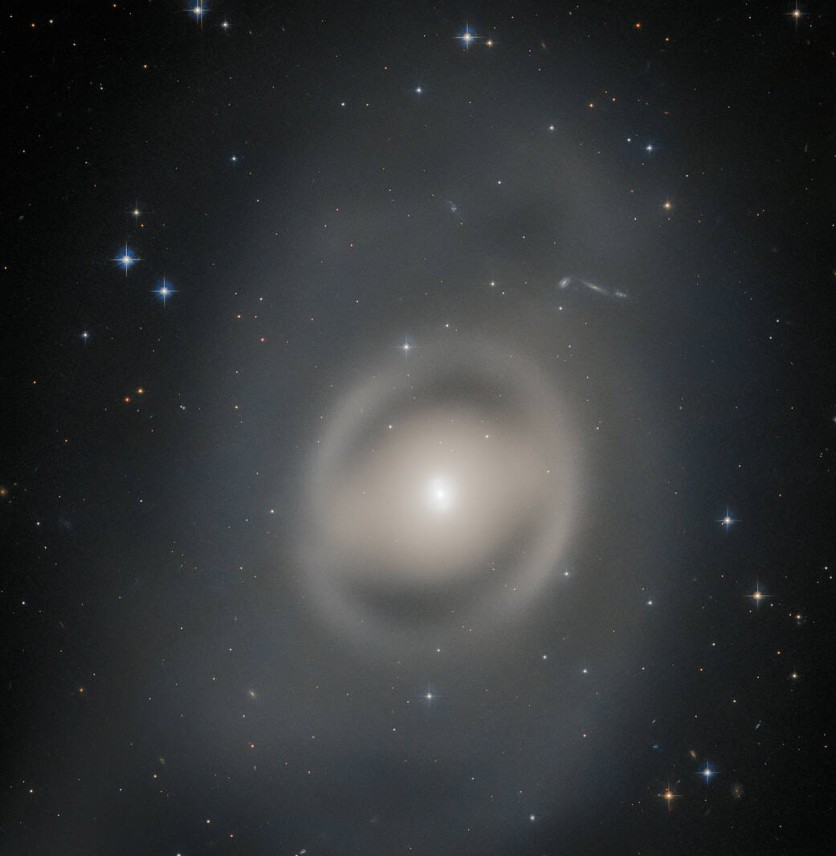The Hubble Space Telescope, operated jointly by NASA and the European Space Agency (ESA), has unveiled a captivating view of the lenticular galaxy NGC 6684 - its form bathed in delicate, ethereal light.
As captured by Hubble's Advanced Camera for Surveys, this celestial object, located approximately 44 million light-years away from Earth, is nestled within the constellation Pavo.
Pavo, which translates to "peacock" in Latin, graces the southern sky and is among the four constellations collectively known as the Southern Birds.

What Are Lenticular Galaxies?
Lenticular galaxies, also known as "S0 galaxies," represent a distinct category of galaxies that share characteristics from both spiral and elliptical galaxies.
Unlike spiral galaxies, lenticular galaxies lack well-defined spiral arms that extend from the central bulge. Instead, they possess a flattened, disk-like structure similar to spiral galaxies but without the pronounced arms.
Similarly, lenticular galaxies differ from elliptical galaxies, which exhibit a smooth, featureless appearance. A central bulge and a flat, rotating disk characterize these galaxies.
While they have a disk component like spiral galaxies, they lack the spiral arms that are a defining feature of spirals. This unique combination of features places lenticular galaxies in an intermediate position between spiral and elliptical galaxies.
Regarding star formation, lenticular galaxies tend to exhibit less ongoing star formation than spiral galaxies. That is because they often lack the necessary reserves of gas and dust required to create new stars.
Large Disk Structure
NGC 6684, a representative of lenticular galaxies, boasts a sizeable disk structure that sets it apart from galaxies such as the spiral Andromeda Galaxy.
However, it diverges from spiral galaxies in its absence of pronounced spiral arms, positioning it in between the categories of elliptical and spiral galaxies. This unique positioning contributes to lenticular galaxies' distinctively diffuse and spectral appearance.
According to NASA, in the case of NGC 6684, the absence of dark dust lanes that commonly traverse other galaxies further accentuates its enigmatic and otherworldly aura.
The imagery captured in this snapshot is a product of the "Every Known Nearby Galaxy" project, an undertaking with the objective of conducting a comprehensive census of galaxies in the vicinity of our own Milky Way.
The project focuses on observing galaxies within a range of 10 megaparsecs, equivalent to approximately 32.6 million light-years, that the Hubble Telescope has yet to visit. Before the commencement of this initiative, Hubble had already turned its gaze toward roughly 75% of these nearby galaxies.
By completing this ambitious census, scientists anticipate gaining profound insights into the diverse array of stars composing galaxies across a broad spectrum of environments.
The lenticular galaxy NGC 6684, illuminated in a gentle, almost spectral luminance, serves as a mesmerizing testament to the Hubble Space Telescope's exceptional capabilities in capturing the intricate beauty and complexity of the universe.
Related Article : NASA Hubble Telescope Captures Space Cluster Containing Stars Millions of Years Old; Here's Why NGC 2660 Is Intriguing

ⓒ 2025 TECHTIMES.com All rights reserved. Do not reproduce without permission.


![Best Gaming Mouse For Gamers With Smaller Hands [2025]](https://d.techtimes.com/en/full/461466/best-gaming-mouse-gamers-smaller-hands-2025.png?w=184&h=103&f=6fd057ef777bd39251d4e7e82e9b23f1)

